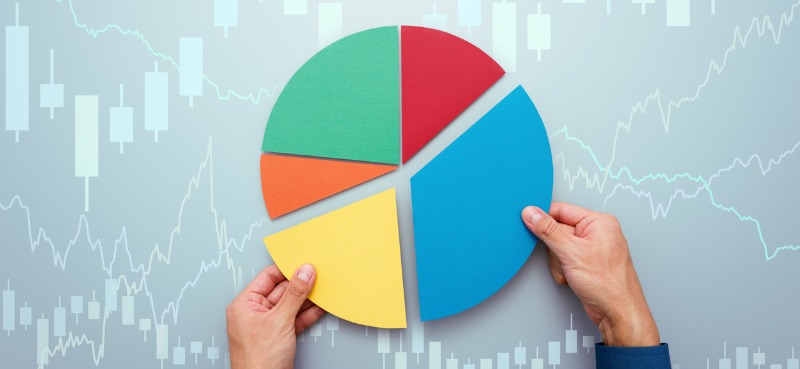Maybe you disagreed when I said General Electric (GE) looked like a better place to park your cash than Apple (AAPL).
But those who followed my suggestion could already be up 10% on the stock.
GE has easily outperformed both Apple and the S&P 500 since my late-February call to grab your gains in the Watch-maker.

I won’t take it personally if you didn’t listen to me then. But you might want to take action this time around.
That’s because GE looks like it could become more than just a short-term trade.
In fact, the big move in this “new” industrial giant is just getting started.
Let me explain …
Last Friday, GE announced it would shed most of its assets in GE Capital (its finance division) over the next two years.
This includes the sale of its real estate assets for $27 billion to Blackstone Group (BX), Wells Fargo (WFC) and other undisclosed buyers.
GE also announced it would return $90 billion to investors in the form of dividends and buybacks over the next four years.
To put this number in perspective, it amounts to nearly the entire market cap of McDonald’s (MCD).
Following the announcement (early Friday), GE shares popped 10%.
This was the largest one-day percentage gain in the stock in six years.
GE’s major announcement seemed to surprise most of Wall Street. After all, GE is one of the most under-owned stocks in the entire S&P 500. And the stock surged following the news.
However, management has been outlining this plan to become a pure-play, high-tech industrial giant for a while. In fact, GE has been selling off its non-core assets for 18 months.
In 2013, GE sold part of its consumer finance business to Spanish lender Santander (SAN). In September 2014, GE sold its century-old appliances division to Sweden’s Electrolux for $3.3 billion.
In late 2014, GE made another asset sale — selling its 69% stake of Swiss bank Cembra to the public — through an IPO. And in March, GE agreed to sell its consumer lending business in Australia and New Zealand to KKR & Co. (KKR) and Deutsche Bank (DB) for more than $6 billion.
On the spending side, GE is doing things that would make founder Thomas Edison proud.
For example, GE recently bought Alstom. The builder of power plants is viewed as one of the leading industrial companies in France.
GE paid roughly $13 billion for the purchase — its largest deal in the history of the company. At the time of the deal, GE was sitting on over $50 billion in foreign cash reserves. This money would have been taxed if it were brought back to America.
Instead, GE made a great acquisition (one that will pay off immediately — once this deal passes regulatory hurdles). Alstom adds to GE’s industry-leading energy-generation segment.
On Friday, GE said it expects 90% of its earnings will be generated by its industrial business. That’s a huge increase from today, where 58% of earnings are generated from industrials.
GE Bets Big on a New Industrial Revolution
The reason GE is going “all-in” on industrials is simple. It is planning on becoming the pure-play on the “Industrial Internet.”
The Industrial Internet is one of the most remarkable trends I’ve ever researched. I call it the “next great era of innovation” behind the Industrial Revolution and the Internet Revolution.

Image source: Slideshare.net
The Industrial Internet is the placing of GPS sensors and wireless modules on billions of machines. This includes jet engines, wind turbines and medical equipment, or products that GE manufactures.
These sensors send millions of data points to supercomputers. This data is then analyzed using special software (Big Data analytics) to help predict the future.
Soon, entire fleets of airplanes and trucks will send and receive data to help ensure they run smoothly. Factory machines will send out alerts before breaking down, reducing maintenance costs and downtime.
GE predicts the Industrial Internet could benefit sectors accounting for more than $30 trillion in economic activity.
That’s about $10 trillion more than the market-cap of every company in the S&P 500 combined!
This stuff may sound like science fiction. But industry-leading companies such as AT&T (T), CSX (CSX), Cisco (CSCO), Accenture (ACN), Siemens, IBM (IBM) and Intel (INTC) are teaming up with GE’s new Industrial Internet technologies to help boost productivity.
GE is also undergoing a massive, in-house transformation training. More than 40,000 of its employees are using a new system called FastWorks.
This program is designed to help GE think more like a start-up instead of an old industrial company.

The company has spent more than $1 billion developing a new material called ceramic matrix composite (CMC).
CMC is a light, tough and heat-resistant material. It allows engineers to build lighter, more efficient engines that can take planes farther and burn less fuel.
It took almost two decades for GE to make this new material, which combines with 3-D printing to make new jet engines.
The engine’s unique design and materials make it 15% more fuel-efficient than similar engines in many Boeing (BA) and Airbus planes.
Another growth initiative includes the adoption of what GE calls “Brilliant Factories.” These factories bring together 3-D printing, software, data, analytics, design and cloud computing.
In other words, teams around the world can work together to design and build a jet engine in “the cloud.”

This new industrial revolution will also help build factories that can learn and make themselves better.
You can read more about these amazing technologies on GE’s website.
GE: (Still) Bringing Good Things to Life
GE is not that old industrial company anymore. The company is transitioning itself into a high-tech data analytics manufacturer.
Each division — from jet engines to healthcare diagnostic machines, power plants and locomotives — will use sensors and Big Data analytics to analyze and improve every machine in real time.
The goal: for every division will be linked to each other.
Customers will be able to buy GE’s jet engines, monitor the data and software run by GE, and then pay GE to come up with strategies to improve productivity.
In short, GE’s new technology initiatives are designed to increase margins, profits and sales for decades to come.
Today, shares are trading for just 14 times forward earnings. That’s a huge discount to the broader market, which is trading at 18 times earnings.
It’s also a big discount to McDonald’s and Procter & Gamble (PG). These two industry leaders are trading at 20 times earnings — and struggling to grow sales.
On top of that, GE pays a 3.7% yield, is expected to return $90 billion back to investors over the next four years, and is angling to become the lead player in the biggest trend in the world — the Industrial Internet.
I suggest buying GE at these levels and holding on for at least the next five to 10 years. And be sure to compound the dividends and capital gains. Based on my analysis, the company should easily outperform the markets during this time frame.
Good investing,
Frank Curzio
image credit: http://www.ge.com























